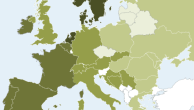About three-quarters of the world’s people (more than 5 billion) live in the 25 most populous countries in the world. Examining the religious restrictions in these countries can show how government restrictions and social hostilities impact large portions of the world’s population – although not all who reside in these countries are affected equally, as religious minorities are often the disproportionate targets of these restrictions.
Among the 25 most populous nations in the world, Egypt, Russia, India, Indonesia and Turkey had the highest overall government restrictions and social hostilities in 2016. Egypt has consistently ranked among this group since Pew Research Center began studying restrictions on religion in 2007. The countries with the lowest overall scores, meanwhile, were Japan, Brazil, the Philippines, the Democratic Republic of the Congo and the United States; Japan, Brazil and the Philippines have typically been fixtures on this list.
Looking at just government restrictions in 2016, China, Iran, Indonesia, Russia and Egypt had the highest levels, with all countries falling in the “very high” category of restrictions. Japan, the Philippines, Brazil, the Democratic Republic of the Congo and the United Kingdom had the lowest levels of government restrictions among the biggest countries in 2016, and all five countries fell into the “low” category of restrictions.
The highest levels of social hostilities perpetrated by groups or individuals among the 25 most populous countries were in India, Nigeria, Egypt, Bangladesh and Russia, with all of these falling in the “very high” category of hostilities. Only Bangladesh moved into this group of five in 2016; India and Nigeria have both ranked among the top five every year since 2008. Meanwhile, Vietnam, China, Japan, Ethiopia and Tanzania had the lowest scores on the Social Hostilities Index (SHI), with “low” to “moderate” levels.
At times, a country’s level of government restrictions can mirror its level of social hostilities. Egypt and Russia, for example, had some of the highest levels of both government restrictions and social hostilities involving religion in 2016, and Japan had low scores on both measures.
But this type of correlation is not always the case. Sometimes, countries with the highest levels of government restrictions can have some of the lowest levels of social hostilities – or vice versa.
China, for example, had the highest Government Restrictions Index score of any country in 2016, yet had “low” levels of social hostilities.
In terms of changes to GRI scores, none of the 25 most populous countries had large changes (more than 2.0 points). Only Tanzania and Ethiopia had modest increases in their scores (between 1.0 and 1.9 points), with both shifting from “moderate” to “high” levels of government restrictions in 2016. In Ethiopia, the increase was due to arrests of anti-government protesters charged under an anti-terrorism law, as well as a six-month state of emergency that limited religious freedoms.73
Six countries had modest increases in SHI scores: Bangladesh, Germany, the Democratic Republic of the Congo, Egypt, Brazil and India. In the Democratic Republic of the Congo, for example, Jehovah’s Witnesses were attacked on multiple occasions for not participating in traditional rituals, and two mosques were burned down after a Muslim man killed a Christian woman in a financial dispute.74
Vietnam and China experienced modest declines (a decrease between 1.0 and 1.9 points) in their SHI scores due to fewer reported incidents of societal harassment of religious groups.




